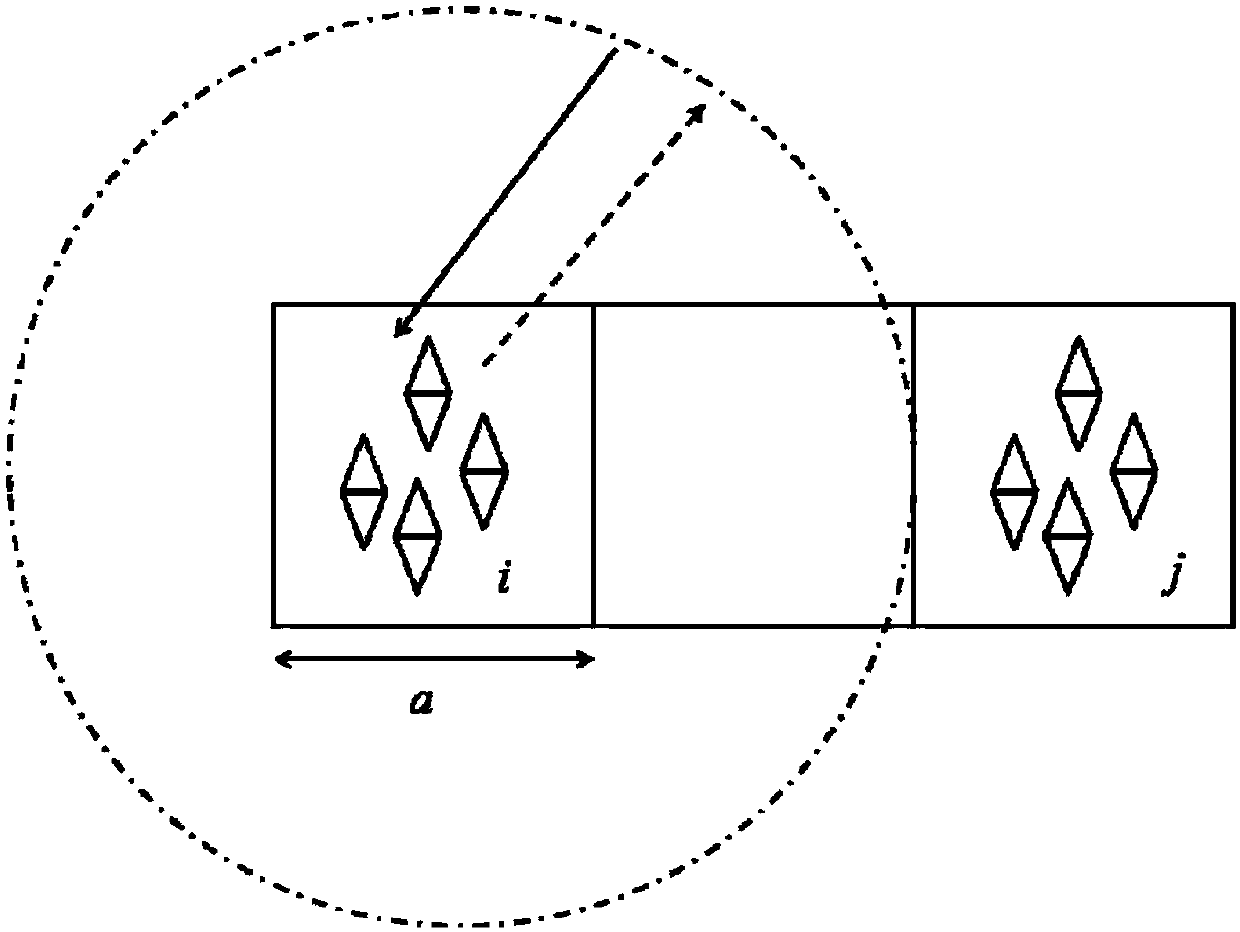Adaptive nested crossover approximation method for analyzing low-frequency electromagnetic characteristics
A technology of self-adaptive crossover and electromagnetic characteristics, which is applied to radio wave measurement systems, instruments, complex mathematical operations, etc., can solve the problems of large computing time and memory, affecting computing efficiency, and large scale of near-field, so as to reduce computing memory And time, programming to achieve simple, low-frequency numerically stable effect
- Summary
- Abstract
- Description
- Claims
- Application Information
AI Technical Summary
Problems solved by technology
Method used
Image
Examples
Embodiment 1
[0066] Combine Figure 5 According to the method of the present invention, low-frequency electromagnetic characteristics are simulated. Take 2 far-field interaction groups from a cylindrical grid with a radius of 0.5 m and a height of 4 m. The size of the group is 0.5 m. The RWG basis functions included are 1200 and 1030, and the incident plane wave frequency is 30 MHz. Attached Figure 4 As the truncation error ε of the adaptive crossover approximation method decreases, the two-norm error curve of the calculation results of the adaptive nested crossover approximation method and the high-precision moment method is given. The high-precision method of moments uses a Gaussian integration point with an inner and outer integral of 61. The method of moments in the figure is the result of using external integration 3 and internal integration 7 as the integration points. It can be seen that as the truncation error ε decreases, the calculation accuracy of the adaptive nested crossover ...
Embodiment 2
[0068] Combine Image 6 According to the method of the present invention and the traditional adaptive cross-approximation method, for a 0.5-meter radius radar scattering cross-sectional area (RCS), the incident plane wave frequency is 600MHz, and the incident angle is vertical incidence. It can be seen that the two sets of results are in good agreement, which further proves the correctness of the inventive method. The unknown amount of object discreteness is 6660, the number of octree layers is 3, the calculation time and memory of the adaptive cross approximation method are 35 minutes, 1.8GB, and the invented adaptive nested cross approximation method is used to calculate the time and memory respectively. It is 8 minutes, 300MB. It can be seen that the inventive method significantly improves the calculation efficiency of low-frequency electromagnetic scattering characteristics.
PUM
 Login to View More
Login to View More Abstract
Description
Claims
Application Information
 Login to View More
Login to View More - R&D
- Intellectual Property
- Life Sciences
- Materials
- Tech Scout
- Unparalleled Data Quality
- Higher Quality Content
- 60% Fewer Hallucinations
Browse by: Latest US Patents, China's latest patents, Technical Efficacy Thesaurus, Application Domain, Technology Topic, Popular Technical Reports.
© 2025 PatSnap. All rights reserved.Legal|Privacy policy|Modern Slavery Act Transparency Statement|Sitemap|About US| Contact US: help@patsnap.com



